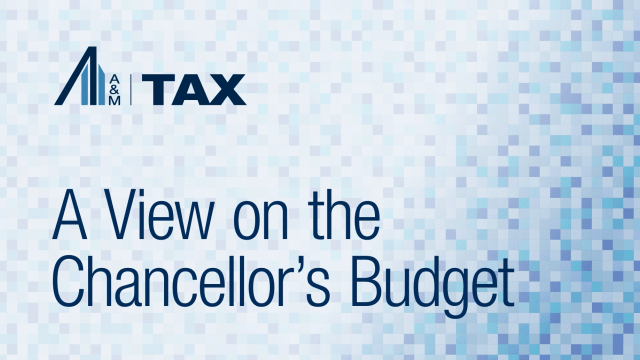An Overview of Terminology and Definitions Contained in IRC Section 199A and the Recently Released Proposed Regulations
This article is the second in a series discussing the new Internal Revenue Code (IRC) Section 199A Qualified Business Income (QBI) deduction and will discuss the key definitions and terminology contained in the proposed regulations in providing an overview of the mechanics in computing QBI. The first article in this series, published August 10, summarizes items contained in each of the IRC Section 199A proposed regulations.
As a recap, IRC Section 199A provides individuals, partnerships, S corporations, trusts and estates engaged in U.S. trades or businesses a 20 percent deduction for QBI which effectively reduces the top federal individual income tax rate from 37 percent to 29.6 percent.
The computation of the QBI deduction is relatively straightforward if your taxable income is below $315,000 if filing a joint return or $157,500 for all other filers. Individuals with income below these thresholds would just need to accumulate the QBI amounts received for each qualified business and combine this with any REIT qualified dividends and income received from qualified publicly traded partnership. The taxpayer would be able to deduct the lesser of 20 percent of the total of this amount or 20 percent of their taxable income in excess of net capital gain.
The vast majority of taxpayers with QBI will have to deal with a more complicated computation. If the individual’s income is above a higher income threshold of ($415,000 if filing a joint return and $207,500 for all other filers), then their share of QBI will not include any income that is from amounts allocable to a specified service trade or business (SSTB).
In addition, there are also a W-2 wage and property limitations that must be applied to determine the amount of QBI for a particular trade or business that may be taken as a deduction in the current year. Finally, the taxpayer must combine the potential deductions from each of their trades or businesses after applying these limitations and compare that to 20 percent of their taxable income in excess of net capital gain to determine the total amount of their Section 199A deduction.
Businesses will need to work with their tax advisers not only to assist in providing information to compute amounts that will be reflected on K-1 footnotes from partnerships, S-Corporations, or trusts, but also at the individual level where the actual IRC Section 199A deduction will be taken. In particular, understanding the definitions below of a consulting business, whether the de minimis rule can be applied, how the W-2 and property limitations work, and how the aggregation rules work, will be critical in computing and maximizing the Section 199A deduction.
We will get into these definitions in more detail below after we first review and discuss the definition of QBI.
Definition of Qualified Business Income
QBI means the net amount of qualified items of income, gain, deduction, and loss with respect to any trade or business. QBI includes ordinary income recognized under Section 751, assuming that the income otherwise satisfies the requirements to be QBI. QBI also includes ordinary losses recognized under Section 1231 from the sale of business property. Items not included in QBI include:
- Any item of short-term capital gain, short-term capital loss, long-term capital gain, long-term capital loss,
- Any Section 1231 gain that is treated as long-term capital gain,
- Any dividend, income equivalent to a dividend,
- Any qualified REIT dividends or qualified PTP income (as defined in the proposed regulations),
- Reasonable compensation received by a shareholder from an S corporation,
- Any guaranteed payment described in Section 707(c) received by a partner for services rendered with respect to the trade or business, regardless of whether the partner is an individual or an Relevant Passthrough Entity, and
- Any payment described in Section 707(a) received by a partner for services rendered with respect to the trade or business, regardless of whether the partner is an individual or a Relevant Passthrough Entity
The proposed regulations provide guidance on how to do computations when there are multiple trade or businesses that have QBI of less than zero as well as if there is a QBI loss carryover.
Netting Concept - The QBI netting concept provides that individuals must offset the QBI attributable to each of their trades or businesses that produced net positive QBI with the QBI from each trade or business that produced net negative QBI before the individual applies the limitations based on W-2 wages and unadjusted basis immediately after acquisition (UBIA) of qualified property, which is described below.
Loss Carryovers - If an individual’s QBI from all trades or businesses combined is less than zero, the QBI component is zero for the taxable year. This negative amount is treated as negative QBI from a separate trade or business in the succeeding taxable year of the individual. The W-2 wages and UBIA from the trades or businesses which produced net negative QBI are not carried over to the subsequent year.
Identifying a trade or business and a specified service trade or business
Now that we have discussed what qualifies as QBI, we will get into the details of what is a trade or business and the definitions of certain trades or businesses (called specified service trades or businesses or SSTBs) that do not qualify for QBI.
Definition of a Trade or Business - The proposed regulations define a trade or business as a Section 162 trade or business other than the trade or business of performing services as an employee. In addition, rental or licensing of tangible or intangible property (rental activity) that does not rise to the level of a Section 162 trade or business is nevertheless treated as a trade or business for purposes of Section 199A, if the property is rented or licensed to a trade or business which is commonly controlled (if the same person or group of persons, directly or indirectly, owns 50 percent or more of each trade or business).
Identifying specified service trade or business - Identifying what trade or business are SSTBs will be a critical component of the QBI computation. The proposed regulations provide guidance and several examples of what is and what is not considered an SSTB. Taxpayers and their advisers will need to spend time reviewing their client’s various business and applying the proposed regulations to determine whether a trade or business meets the definition of an SSTB. If a trade or business is an SSTB, no QBI, W-2 wages or qualified property from the SSTB may be taken into account by individuals above the income threshold.
In addition to the thirteen SSTBs which are listed below, performing services as an employee would also not be considered to be a qualifying trade or business. The SSTBs listed in the proposed regulations are:
(i) Health
(ii) Law
(iii) Accounting
(iv) Actuarial
(v) Performing arts
(vi) Consulting
(vii) Athletics
(viii) Financial services
(ix) Brokerage services
(x) Investing and investment management
(xi) Trading
(xii) Dealing in securities, partnership interests, or commodities
The thirteenth activity that is an SSTB is any trade or business where the principal asset of such trade or business is the reputation or skill of one or more of its employees or owners. The preamble to the regulations state the Treasury Department and IRS believe this category is intended to describe a narrow set of trades or businesses, so they have limited the definition in the proposed regulation to provide that this category only applies to any of the following (or any combination thereof):
- A trade or business in which a person receives fees, compensation, or other income for endorsing products or services,
- A trade or business in which a person licenses or receives fees, compensation or other income for the use of an individual’s image, likeness, name, signature, voice, trademark, or any other symbols associated with the individual’s identity,
- Receiving fees, compensation, or other income for appearing at an event or on radio, television, or another media format.
In order to prevent taxpayers from circumventing the rules and splitting an SSTB into its component parts (in which some of the components may not otherwise constitute an SSTB), Prop. Reg. §1.199A-5(c)(2) provides that an SSTB includes any trade or business with 50 percent or more common ownership (directly or indirectly) that provides 80 percent or more of its property or services to an SSTB. Additionally, if a trade or business has 50 percent or more common ownership with an SSTB, to the extent the trade or business provides property or services to the commonly owned SSTB, the portion of the property or services provided to the SSTB will be treated as an SSTB (meaning the income will be treated as income from an SSTB).
Many businesses provide consulting services as part of selling their products. The preamble to the proposed regulations expressly addresses this situation: If a trade or business does not separately bill for the consulting service, then any sale of consulting services included with the sale of goods is not considered consulting services and therefore is not an SSTB.
SSTB De Minimis Exception – The preamble to the proposed regulations notes the IRS is aware that certain trades or businesses sell both goods and services that, on their own, would generate QBI and services that would constitute an SSTB. The proposed regulations contain a de minimis rule in order to help those taxpayers who have those kinds of business qualify their trade or business activity as QBI and not as an SSTB.
The de minimis rule states a trade or business (determined before the application of the aggregation rules which are discussed below) is not an SSTB if the trade or business has gross receipts of $25 million or less (in a taxable year) and less than 10 percent of the gross receipts of the trade or business is attributable to the performance of services in an SSTB. For trades or business with gross receipts greater than $25 million (in a taxable year), a trade or business is not an SSTB if less than 5 percent of the gross receipts of the trade or business are attributable to the performance of services in an SSTB.
Wages and Property Limitation
After taxpayers over the income threshold determine their businesses are not SSTBs, their QBI is also potentially limited to the greater of:
- 50 percent of the W-2 wages of the business allocable to QBI, or
- 25 percent of the W-2 wages plus 2.5 percent of the business UBIA for each qualified trade or business.
Wage Limitation – The proposed regulations state that the Form W-2 must be issued for employment by the trade or business in order to be included in the wage limitation for that trade or business.
The proposed regulations also contain rules for when taxpayers may take into account wages reported on Forms W-2 that are issued by other parties with respect to a particular trade or business. Proposed Reg. §1.199-2(a)(2) provides that the W-2 wages for a trade or business includes wages paid by another person and reported by the other person on Forms W-2 (even if the other person is listed as the employer) provided the W-2 wages were paid to common law employees or officers of the trade or business for employment by that trade or business. If W-2 wages are attributable to more than one trade or business, the proposed regulations state they must be allocated in the same way as other deductions to those business.
The IRS also issued a proposed revenue procedure, Notice 2018-64, to provide additional guidance on the computation of W-2 wages for purposes of the wage limitation. The notice provides 3 possible options to compute W-2 wages:
- Unmodified Box Method which would take the lesser of Box 1 or Box 5 of the W-2s
- Modified Box 1 Method -Taxpayer makes certain adjustments to Box 1 income
- Tracking Wages Method – Taxpayer tracks total wages subject to federal income tax withholding and makes appropriate modifications
Property Limitation – UBIA is generally defined in the proposed regulations as the cost basis under IRC 1012 of the property acquired by the entity as of the end of the tax year. In order to mitigate the impact of bonus depreciation and IRC 179 expensing, UBIA is included in the computation above for the greater of 10 years or its tax depreciable life. The proposed regulations also note the Section 734 and Section 743 partnership basis adjustments are not treated as UBIA for purposes of the property limitation. There is also a special rule to prevent taxpayers from trying to artificially increase the basis of property basis for Section 199A. This rule states that property is not qualified property if the property is acquired within 60 days of the end of the taxable year and disposed of within 120 days without having been used in a trade or business for at least 45 days prior to disposition, unless the taxpayer demonstrates the principal purpose of the acquisition and disposition was a purpose other than increasing the Section 199A deduction.
The proposed regulations also provide guidance on how to compute a partner’s share of property to include in their QBI computation. A partner’s share of property is based on the ratio used to compute their share of tax depreciation. If the partnership did not have any tax depreciation during the year, the property should be allocated based on how gain would be allocated to the partners pursuant to Sections 704(b) and 704(c) if the qualified property were sold in a hypothetical transaction for cash equal to the fair market value of the qualified property.
Aggregation
As noted above, generally a taxpayer must separately apply the wage and property limitations for each trade or business against that trade or business’s QBI. Proposed Reg. §1.199A-4 permits taxpayers to aggregate multiple trades or businesses in certain limited circumstances. Aggregation is not required but once the taxpayer decides to aggregate trades or businesses, they must be consistent in their treatment of aggregating business in subsequent years.
A taxpayer can only aggregate trades or businesses if the same person or group of persons, directly or indirectly, owns 50 percent or more of each trade or business. The trades or businesses to be aggregated must also satisfy at least two of the following factors which are supposed to prove they are in fact part of a larger integrated trade or business:
(A) The trades or businesses provide products and services that are the same or customarily offered together, such as a restaurant and a food truck or a gas station and a car wash.
(B) The trades or businesses share facilities or share significant centralized business elements, such as personnel, accounting, legal, manufacturing, purchasing, human resources, or information technology resources.
(C) The trades or businesses are operated in coordination with, or reliance upon, one or more of the businesses in the aggregated group (for example, supply chain interdependencies).
It is interesting to note the preamble to the regulations contains a caveat to aggregation and states that in most cases, a trade or business cannot be conducted through more than one entity. As such, taxpayers should consult with their tax advisers and discuss and analyze their trades or businesses to determine which ones can be aggregated under the definitions in the proposed regulations and taxpayers may need to wait for the final regulations to get additional clarifications on when they can and cannot aggregate trade or businesses.
Tiered Partnerships
Proposed Reg. §1.199A-6 provides the computational rules for tiered partnerships. There are four rules listed in the proposed regulations for tiered partnerships:
- First, the relevant partnership entity must determine if it is engaged in one or more trades or businesses.
- Second, the relevant partnership entity must determine the QBI for each trade or business engaged indirectly.
- Third, the relevant partnership entity must determine the W-2 wages and cost basis of qualified property for each trade or business engaged indirectly.
- Fourth, the relevant partnership entity must determine whether it has any qualified REIT dividends as defined earned directly or through another relevant partnership entity.
The Treasury Department states in the proposed regulations that it is requesting comments on proposed approaches to tiered structures and the reporting necessary to allow an individual to demonstrate to which trades or business his or her QBI, W-2 wages, and property are attributable for purposes of calculating his or her Section 199A deduction.
A&M Taxand Says:
The proposed regulations provide guidance and plenty of complexity for taxpayers who own multiple trades or businesses. While the final regulations might clarify and change some of the details and definitions that are in the proposed regulations, now is the time to start working with tax advisers to discuss the mechanics of IRC Section 199A and the proposed regulations before the 2018 tax filing season begins in early 2019.





